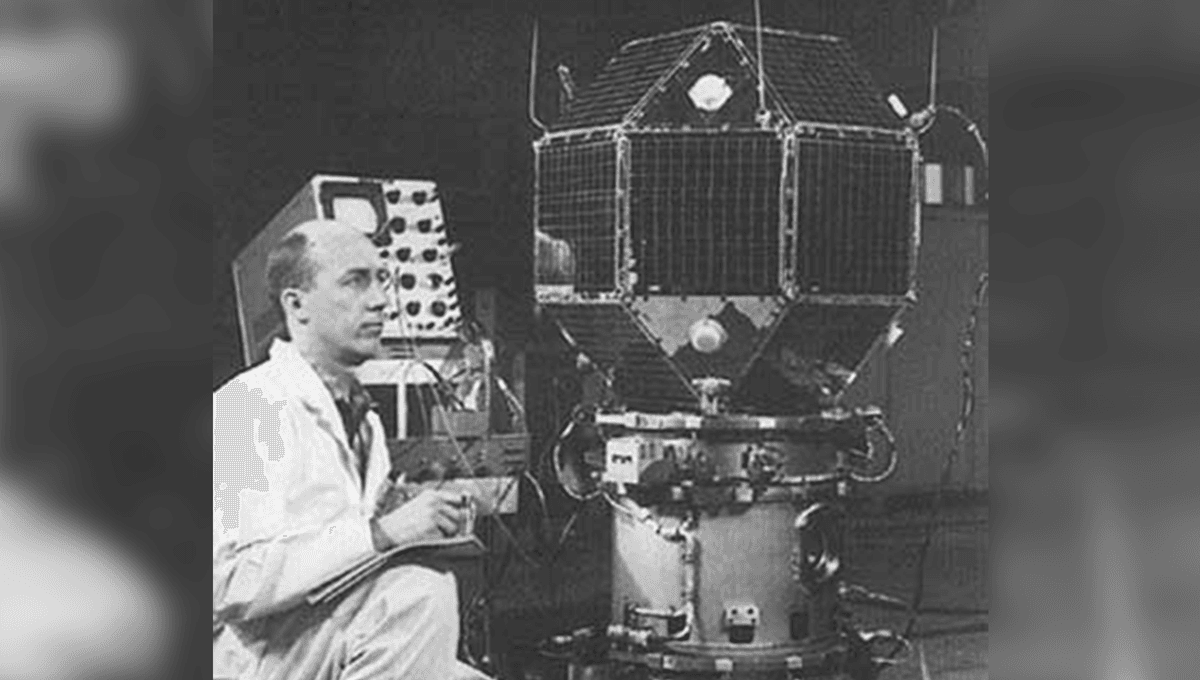
In 1965, the US Air Force and the Lincoln Laboratory at MIT launched two Lincoln Experimental Satellites (LES) into orbit around the Earth: LES-1 and LES-2.
These were the first super-high-frequency satellites, using the X-band of the electromagnetic spectrum.
“Lincoln Laboratory’s space communications program after Project West Ford began in 1963 with a charter to build and demonstrate military space communications systems. The initial program objective was to build, launch, and field a LES and a LET [Lincoln Experimental Terminals] that would work together as a system and demonstrate practical military satellite communications,” NASA’s History Office explains of the project, which had mixed success.
“LES-1, launched from Cape Canaveral on 11 February 1965, accomplished only a few of its objectives,” NASA adds. “Apparently because of miswiring of the ordnance circuitry, the satellite never left circular orbit and ceased transmitting in 1967. LES-2, the twin of LES-1, fared much better; it achieved its planned final orbit on 6 May 1965.”
LES-1, no longer sending any signals, continued on its orbit around the Earth for nearly half a century, another piece of dead space junk littering up Earth’s orbit. But in 2013, an amateur radio astronomer in Cornwall, UK, picked up a signal that could only be from LES-1. It had become what is known as a “zombie satellite”; satellites that – sometimes mysteriously – become active once more.
According to Phil Williams, who found the space zombie, the signal coming from the satellite faded in and out on a four-second loop. He attributed this to LES-1 tumbling on its end every four seconds, with the engines blocking its solar panels.
“This gives the signal a particularly ghostly sound as the voltage from the solar panels fluctuates,” Williams said at the time.
After the satellite came back to life, a team from the Lincoln Laboratory set up a system to record LES-1 every time it passed over the main university campus.
“LES-1 is one of the oldest satellites in space and part of Lincoln Laboratory’s legacy in SATCOM [satellite communications], so to see it still transmitting after all these years is remarkable,” Navid Yazdani, leader of the Laboratory’s Advanced SATCOM Systems and Operations Group, said in a statement. “LES-1 introduced several innovative SATCOM technologies and techniques for its time, and lessons learned during the launch and testing of LES-1 enabled engineers to refine the design of subsequent experimental satellites that paved the way for future military and civil systems.”
So, what caused this satellite to go zombie mode? We aren’t entirely sure, but of course, it is nothing to worry about.
“Though we don’t know for certain why this ‘zombie’ satellite came back to life, one possibility is that LES-1 experienced an electrical short (caused by its batteries or circuitry degrading over time), allowing power from its solar cells to directly reach the transmitter,” the Lincoln Laboratory explains.
The satellite remains in orbit, and operational, to this day.
Source Link: Nearly Half A Century After Being Lost, "Zombie Satellite" LES-1 Began Sending Signals To Earth